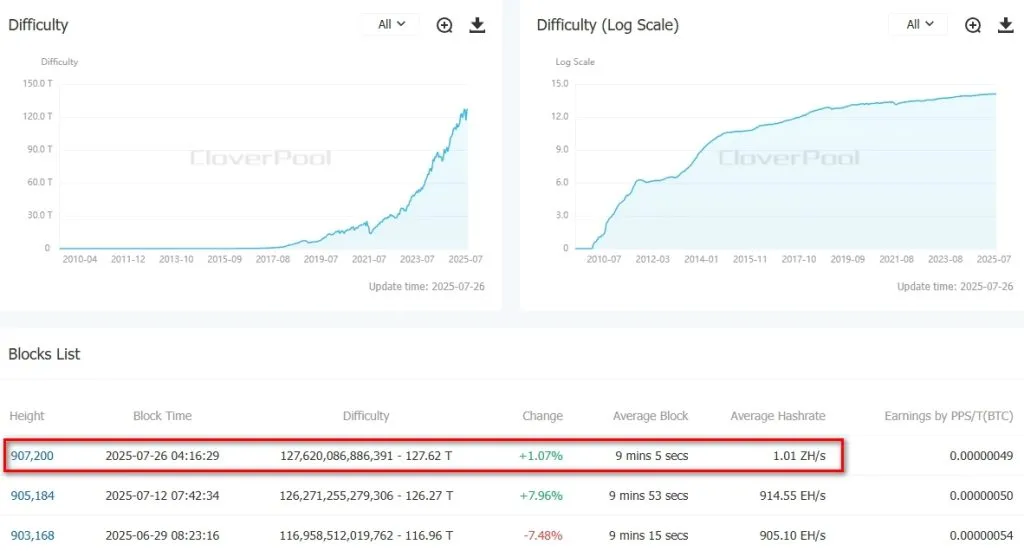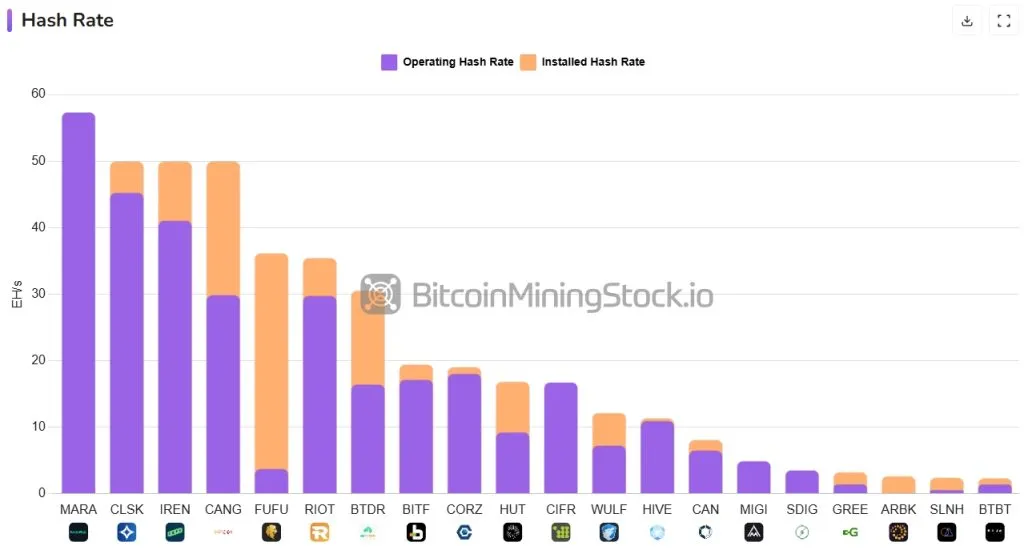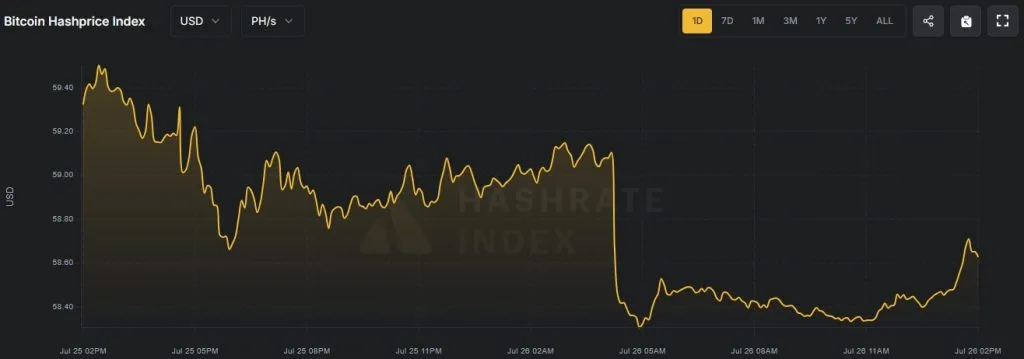On July 26, Bitcoin’s mining difficulty notched a historic milestone, surpassing 127 trillion for the first time. The latest adjustment raised the network’s difficulty by just 1.07%, but it was enough to push the metric to a new peak at 127.62T.
 Bitcoin mining difficulty sets new record. CloverPool.
Bitcoin mining difficulty sets new record. CloverPool.In tandem with this adjustment, the network’s hash rate topped 1 zettahash per second (ZH/s), while the average block interval tightened to nearly nine minutes—an efficiency spike that underscores surging computational power on the network.
Hashrate Trends and Mining Company Dominance
According to Glassnode, the seven-day smoothed average hash rate now sits at 932.2 exahash per second (EH/s), slightly below the all-time high of 943.4 EH/s recorded on May 31. Publicly listed mining firms continue to drive a significant share of this capacity, accounting for 37.5% of global hashrate based on data from BitcoinMiningStock.
Four U.S.-listed companies—MARA, CleanSpark, IREN, and Cango—have each crossed the 50 EH/s mark in installed computing power, while BitFuFu and Riot Platforms are closing in on this milestone.
 Public miners approach 50 EH/s club. BitcoinMiningStock.
Public miners approach 50 EH/s club. BitcoinMiningStock.Hashprice Recovers as Bitcoin Bounces
The latest difficulty increase initially pushed the hashprice down from $59.1 to $58.3 per PH/s per day, reflecting tighter mining margins. However, a rebound in Bitcoin’s price to $117,500—after dipping to $114,000 the day before—helped hashprice recover to the $58.7 area.
 Hashprice rebounds with BTC price. Hashrate Index.
Hashprice rebounds with BTC price. Hashrate Index.It’s worth noting that the network’s previous difficulty adjustment on July 12 saw an 8% jump, significantly tightening conditions for miners and adding pressure on industry profitability.

